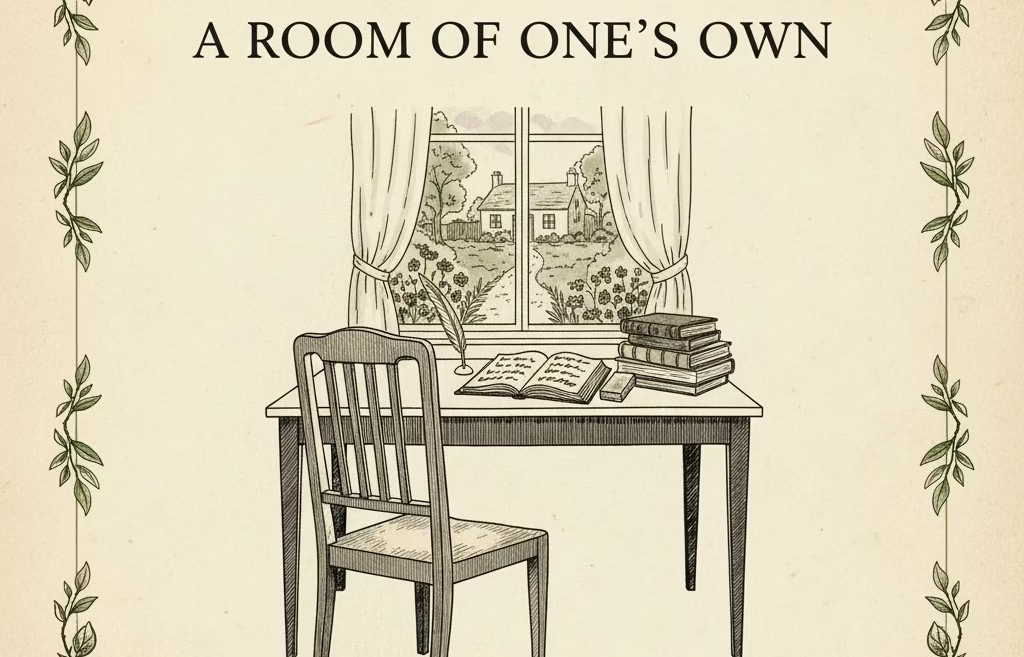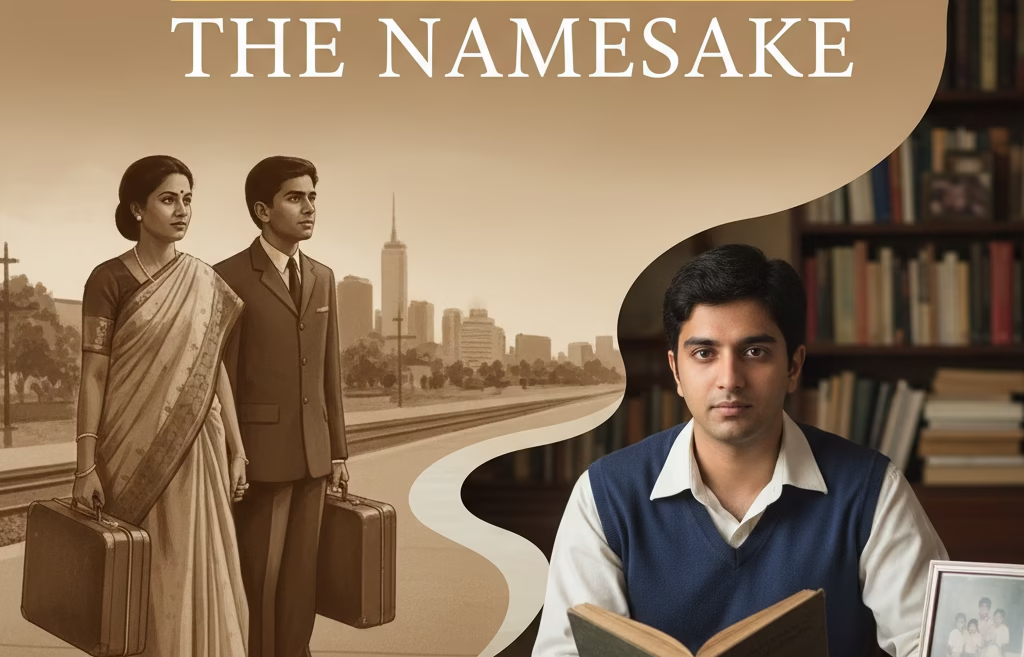Introduction
Virginia Woolf’s A Room of One’s Own is far more than a simple essay. It stands as a groundbreaking exploration of the social, economic, and cultural barriers that have historically limited women’s creative expression. Originally delivered as a series of lectures at Cambridge University in 1928 and published the following year, this work has become a cornerstone of feminist literary criticism. Today, it remains a powerful call for gender equality within literature and beyond.
Woolf invites readers on a reflective journey through her distinctive blend of narrative storytelling, sharp intellect, and poetic language. Her essay challenges long-held assumptions about women’s roles as writers and creators—assumptions that have often silenced women’s voices. At the heart of Woolf’s argument lies a deceptively simple but profound metaphor: for a woman to write fiction, she must have “money and a room of her own.”
These conditions symbolise much more than just physical space or financial means. They represent the essential intellectual, emotional, and material freedoms that allow creativity to thrive truly. Woolf vividly recounts her visits to the male-dominated institutions of Oxford and Cambridge, exposing the systemic inequalities that barred women from the halls of knowledge and power. Through these observations, A Room of One’s Own opens a window onto the broader struggles women face in claiming autonomy, recognition, and voice within the literary world.
Even today, this essay resonates deeply in a cultural climate still engaged with questions of gender equity, creative freedom, and representation. Woolf’s insights compel readers not only to confront historical injustices but also to recognize the ongoing need to create spaces—both literal and metaphorical—that nurture diverse voices. By unpacking themes such as feminism, economic independence, and the intersection of gender and creativity, this blog post will highlight why A Room of One’s Own remains an essential read for lovers of literature, social justice, and the transformative power of storytelling.
Virginia Woolf’s A Room of One’s Own: The Historical Context
In the early twentieth century, Woolf addressed a society where women writers were marginalised, financially dependent, and creatively hemmed in. The patriarchal structures of education, property ownership, and social norms excluded women from spaces traditionally linked to intellectual work. Woolf’s essay emerged at a moment when women’s suffrage had seen progress, but deeper systemic inequalities remained.
Through a mix of fictional narrative and essayistic argument, Woolf traces the obstacles faced by women throughout history. Her fictional narrator—sometimes named “Mary Beton”—embarks on journeys to Oxford and Cambridge, symbolic bastions of male intellectual privilege, only to encounter barred doors and limited access. Woolf’s rich descriptions of these spaces—dim, festive, yet unwelcoming—reflect a broader cultural exclusion. This symbolic imagery vividly illustrates how the absence of private, personal space restricted women’s ability to think, create, and write. FULL TEXT
Virginia Woolf’s A Room of One’s Own: Creative Freedom
Central to Woolf’s thesis in A Room of One’s Own is the assertion that economic independence paired with physical space is indispensable for women’s creativity. “A woman must have money and a room of her own if she is to write fiction,” Woolf famously declares, emphasising that material conditions underpin intellectual freedom.
Financial autonomy liberates women from the domestic dependencies and social obligations that often throttle creative pursuits. Meanwhile, a private room—literal and metaphorical—provides the sanctuary needed for concentration and self-expression. Woolf argues this is true not only for women but for all creators; yet women’s exclusion from such resources has historically stifled their voices.
The metaphor extends beyond physical dimensions to encompass intellectual and psychological freedom. Woolf’s call for “a room of one’s own” is ultimately a call to societal transformation—removing barriers so women’s imagination and talent can flourish unimpeded.
Virginia Woolf’s A Room of One’s Own: Feminist Literary Criticism
Woolf’s essay is foundational in feminist literary criticism and remains widely studied for its nuanced examination of gender, creativity, and power relations. She critiques the masculine literary canon that marginalises and misrepresents women. More importantly, Woolf envisions a future where women’s literary achievements are not only recognised but also normalised and celebrated.
In the text, Woolf invents a poignant figure: Judith Shakespeare, the imagined sister of William Shakespeare. Judith is denied opportunity because of her gender and the era she lives in. Her tragic fate symbolises the historical silencing of women’s genius and highlights systemic injustice.
Beyond advocating for equality, Woolf challenges the very nature of creativity as gendered. She proposes the concept of an androgynous mind that blends male and female qualities to produce the fullest literary expression. This visionary ideal continues to inspire scholarship exploring identity, voice, and the complex intersectional contexts shaping women’s writing.
Virginia Woolf’s A Room of One’s Own: Themes
Gender and Creativity
Woolf interrogates assumptions that women’s creative talents are inherently weaker or different. Instead, she attributes disparities to structural inequality. She eloquently blends social critique with poetic prose to dismantle mythic representations of women as either angelic muses or monstrous others.
Economic and Social Barriers
The essay emphasises how poverty or material deprivation limits intellectual ambition. Woolf notes how “one cannot think well, love well, sleep well, if one has not dined well,” highlighting the embodied experience of oppression.
Educational Discrimination
Woolf’s reflections on her visits to Oxford and Cambridge reveal the symbolic power of educational spaces. Women’s historical exclusion from libraries, lectures, and quiet study embodies wider cultural marginalisation.
Androgyny and Literary Freedom
Her theory of the androgynous mind imagines crossing gender binaries within the creative process, a radical and poetic idea asserting that art transcends rigid identity categories.
Virginia Woolf’s A Room of One’s Own: Relevance
A century after its publication, A Room of One’s Own remains a cornerstone text in feminist thought and literary theory. Its insights into gender, power, and creative space resonate beyond literary studies into broader cultural and political conversations about equality.
In the digital age, Woolf’s ideas invite reflection on new forms of creative space—virtual, educational, and economic—and how these shape opportunities for women and minorities globally. For emerging writers, scholars, and cultural activists, the essay is an enduring call to ensure freedom, respect, and resource access for all creative voices. EXPLORE MORE AUTHORS
Virginia Woolf’s A Room of One’s Own: Personal Reflection
Reading A Room of One’s Own feels like engaging in a warm, sometimes challenging conversation that stretches across time. Woolf’s narrative voice artfully combines humour, irony, and sincerity. This combination invites readers to empathise with past injustices while also imagining a fairer future. She emphasises a crucial, often overlooked truth: creativity is not simply a spark of genius. Instead, it deeply depends on freedom, security, and a sense of self-possession.
This essay teaches patience and humility in scholarship. Woolf does not rush to conclusions; instead, her writing meanders thoughtfully, mirroring the complexity of women’s experiences. As both a reader and an academic, one is encouraged to examine more deeply how personal and political spaces intertwine. Moreover, Woolf reminds us that literature remains a vital site of resistance and renewal.
Conclusion
In conclusion, A Room of One’s Own remains a powerful, lasting feminist literary insight. This essay transcends its time by highlighting gender, creativity, and social inequality. Woolf’s emphasis on economic independence and a private space for women remains relevant today. She challenges us to rethink the conditions necessary for creative freedom.
Her vivid description of women’s exclusion from educational, financial, and cultural resources forces readers to face persistent barriers. Moreover, Woolf’s inventiveness shines in her creation of Judith Shakespeare. She symbolises the tragic effects of exclusion for women and society. Her call for a more inclusive literary future is just as urgent now as nearly a century ago.
Finally, A Room of One’s Own encourages reflection and action. It urges writers, scholars, and activists to break down obstacles to creativity. Woolf’s vision of freedom, autonomy, and space can inspire a more inclusive literary world. This essay remains essential for fostering gender equality and artistic liberty.





